By Eric Hammond, OD
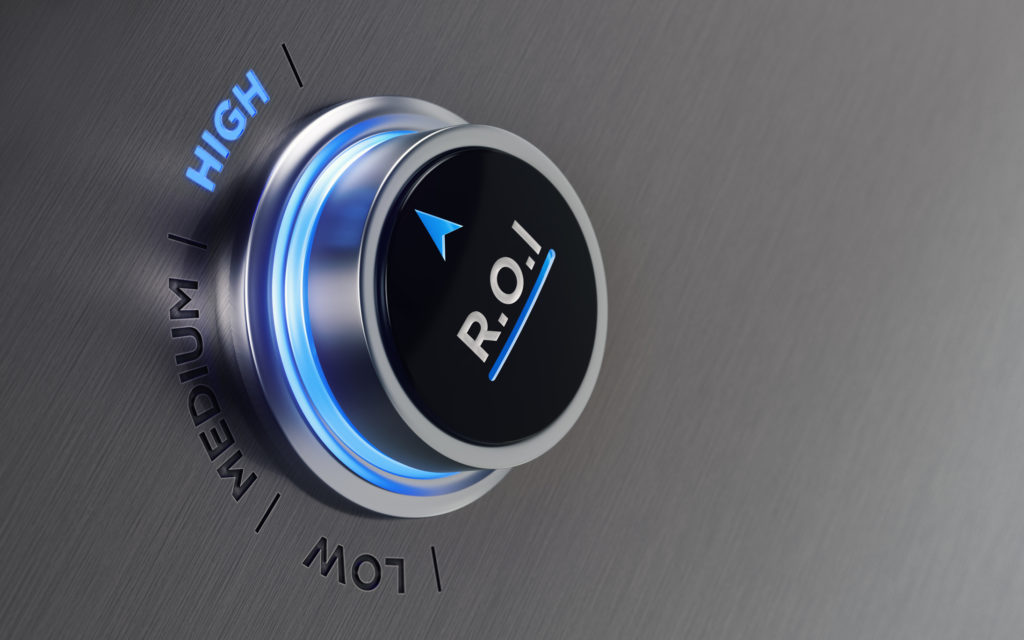
June 12, 2019
Instrumentation can improve patient care, allowing for early detection and management of sight-threatening conditions, and in the optical, it can facilitate the creation of personalized eyewear. These investments also can pay off for the practice financially. Here are the three instruments that delivered the greatest return on investment for my practice.
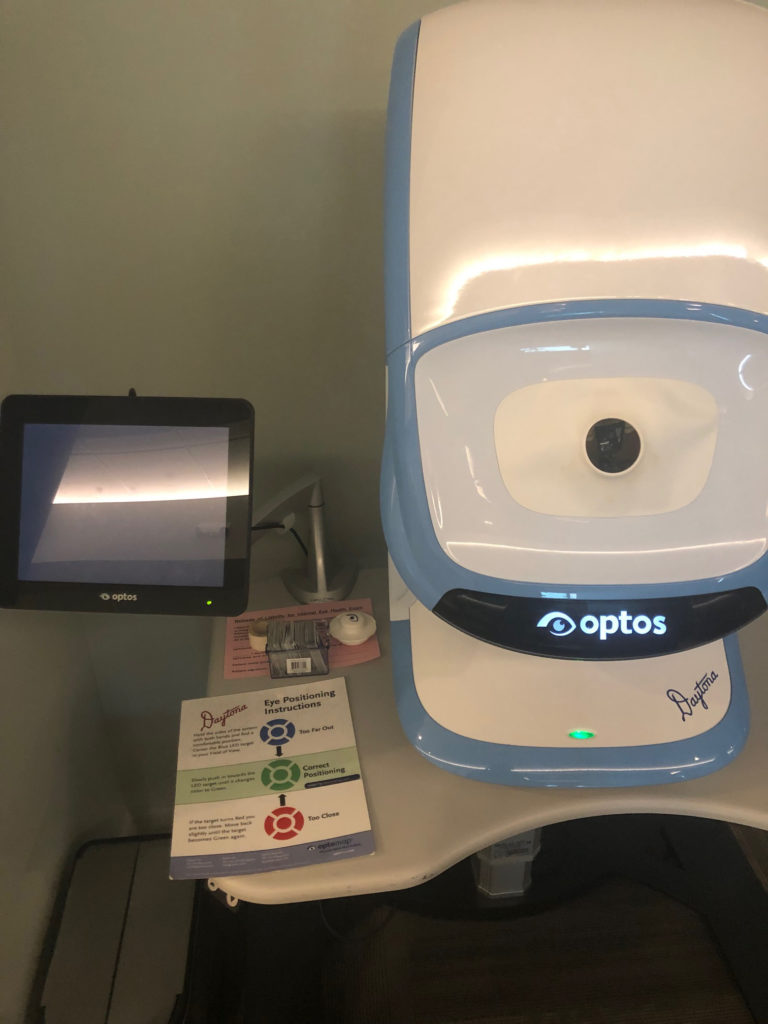
The Daytona Optos instrument in Dr. Hammond’s office. He says the great diagnostic capability of this instrument, and the more expensive Monaco model, which includes an OCT, helps patients and practice profitability.
Optomap
There are different models of the optomap. All of the models take a scan of the retina and create a digital image. All the newer models also take autofluoroscence images.
The Monaco does all of that, but has added an Ocular Coherence Tomographer (OCT) of the macula and optic nerve.
Impact on patient care: “A picture is worth a thousand words,” as the old saying goes. I can compare previous images versus new images side by side. I can analyze every blood vessel, nevus and pigmentary change with as much scrutiny as I want.
I insist that every new patient get an optomap screening as part of their exam. If the patient says they cannot afford the screening fee, I will waive it the first year. I believe it is essential for me to have a digital retinal image at their first exam.
Cost: The Daytona model is around $65,000 and the Monaco is closer to $100,000.
How did you acquire it?: We have a lease-to-purchase agreement for both models of optomap. The Daytona is approximately $1,200 per month and the Monaco is about $2,100 per month.
Revenue generation: Revenue in our practice from optomap screenings is over $34,000 per month, with an average of 950 digital scans per month.
Tips to optimize benefit to patients and profitability: Front-desk employees and technicians should be well trained on what the optomap does and its importance. We give the patient a form with a quote estimate of the fees for the day. This includes the optomap fee with an explanation of what it is and why it needs to be done every year. We make sure that the doctor shows the patient a digital image of their retina, discusses how amazing the image is and what we are looking for. It is funny how many times we get new patients into the office who say, “I think I had the photos done at another office, but they didn’t go over them with me.”
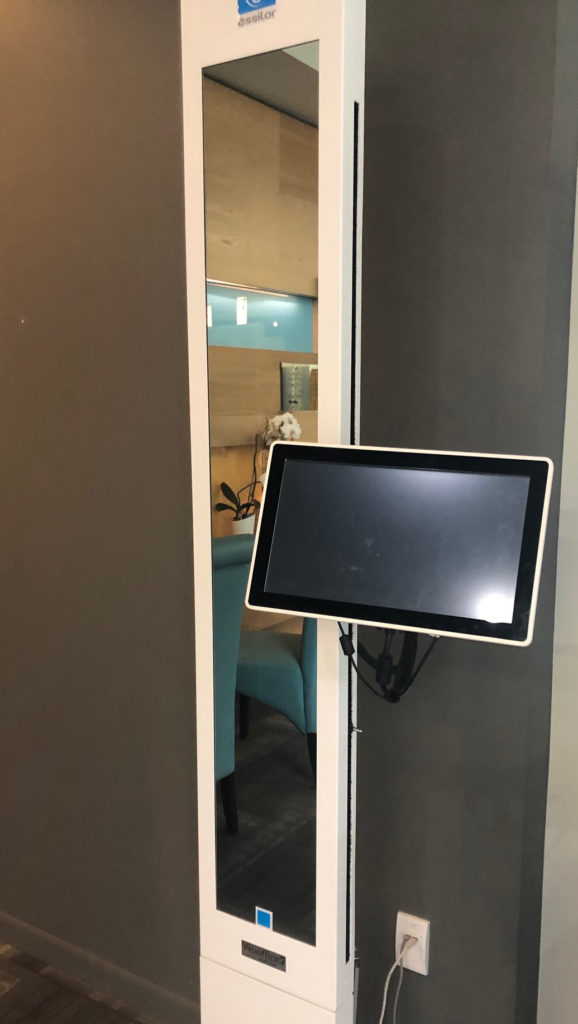
The Visoffice system, which allows Dr. Hammond’s practice to create custom progressive eyewear for patients. He says the technology improves visual performance and is a strong revenue generator.
Visioffice
This technology gives custom digital measurements for glasses. It measures frame wrap, pantoscopic tilt, PD, etc., to create a custom progressive lens.
Impact on patient care: Our office has to distinguish itself from Warby Parker, Costco, Sam’s Club and other online and big-box retailers. The patient experience is the best way to do that. We offer the best lenses and the best care. With progressives, there is a drastic difference in comfort between “basic” progressive designs and high-end custom progressives.
The Visioffice and other digital measuring devices allow the patient to stand in their normal posture and get measurements from different positions of gaze. All this leads to a specific prescription and lens design for each individual patient that takes into account their frame, and even if they are right- or left-handed.
It is a definite “wow” moment for the patient. We frequently hear, “I remember when they just dotted the lenses before.” Using high-end technology to measure for our best progressives helps to justify the cost to the patient.
Cost: Around $14,000
How did you acquire it?: We had enough rebates because of our high usage of Essilor lenses that we ended up not having to pay for it out of pocket.
Revenue generation: With VSP there are different categories of progressives. Some of the categories do not require a custom measurement, and some do. For example, Varilux Comfort W2+, is a F category lens that does not require custom digital measurements. Varilux X+ Fit (fit designates that you need a custom measurement) is a N series lens.
Other Articles to Explore
Our fee for the Varilux Comfort W2+ is $319 compared to $475 for the Varilux X+ Fit. The digital measurement is an additional $50. In a three-month time period, we did 76 F category lenses, and 353 N category lenses. Let us assume your office does not have a custom measurement device (or it does and you just aren’t using it!). That would give us 429 F series lenses.
The difference in total billable costs between those is $136,851 if you only did F series lenses, and $209,569 for the combination of F and N series lenses plus the digital measurement fee. That is over a $70,000 difference in a three-month time period. This does not include every other vision insurance or private pay for which we charge the $50 custom measurement fee.
Tips to optimize benefit to patients and profitability: We want our patients to have the best. Visioffice allows us to only offer two types of progressives, which helps us train opticians, speeds up the selection process and reduces errors. It has also increased profit significantly. When we had three progressive options, most patients got the middle option. Now they get the custom progressive we really want them to have.
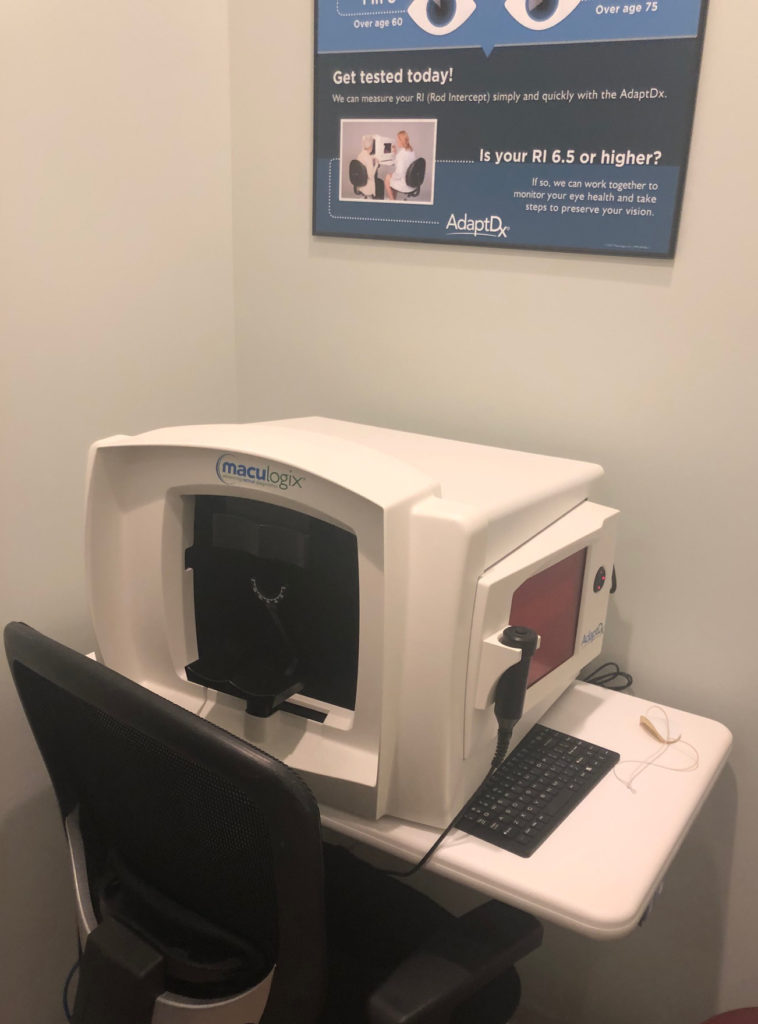
The AdaptDx instrument enables Dr. Hammond’s practice to test patients’ dark adaption time, giving information that could indicate early AMD. The practice then can start treatment early enough to make a difference in patient outcomes.
AdaptDx
This instrument tests a patient’s dark adaptation, which helps detect the earliest stages of macular degeneration before we ever see clinical signs of drusen.
Impact on patient care: We now know that delayed dark adaptation is a biomarker for AMD – it is the first symptom during the beginning stages of the disease process. The pathophysiology of AMD at the very beginning stage is the same mechanism in intermediate and severe stages.
If we can educate patients about their systemic health, diet, exercise, and start them on nutritional supplements, we are better able to care for these patients and help delay the disease’s progression. The sooner we do this, the better the visual outcome should be.
Cost (manufacturer suggested retail price): $49,900
How did you acquire it?: Leased it for $1,200 monthly.
Revenue generation: In three months, we generated $2,871 on 50 total tests performed. However, we also generate income from selling supplements, sunglasses and blue-light blocking lenses related to the results of testing conducted with this instrument.
If a patient fails the AdaptDx, an OCT is billable to check for drusen (under the abnormal dark adaptation curve ICD 10 code). You can also bill office visits for their follow-ups. If you factor our supplements into the equation, we are at $13,000 total for those three months. Conservatively, if you add office visits, sunglasses and other related sales, revenue generated is likely around $20,000 total for those same three months.
Disclosure: I am a paid speaker for AdaptDx, but that did not influence the evaluation–a pure mathematical calculation–that placed this instrument among our top three revenue generators.
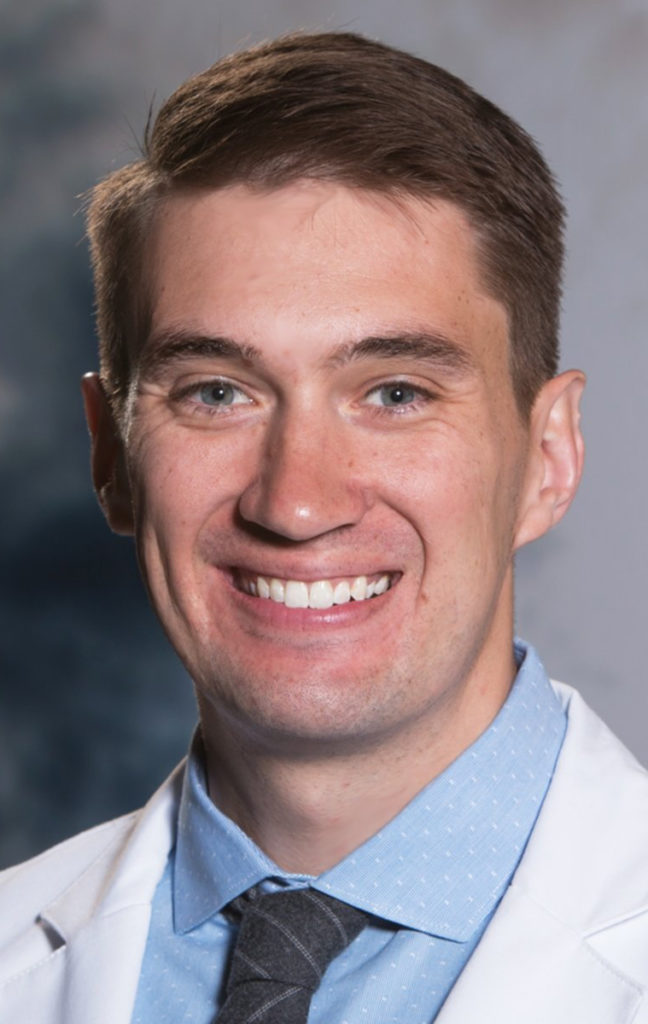 Eric Hammond, OD, is an associate at Lakeline Vision Source in Cedar Park, Texas. To contact him: DrEric@lakelinevision.com
Eric Hammond, OD, is an associate at Lakeline Vision Source in Cedar Park, Texas. To contact him: DrEric@lakelinevision.com





















